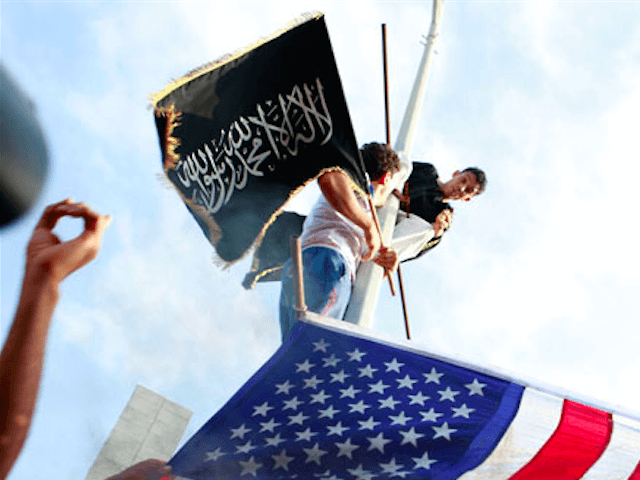Several times during Hillary Clinton’s testimony Thursday at the House Select Committee on Benghazi, Democrats argued that it had been reasonable to blame an anti-Islamic YouTube video for the violence.
During carefully rehearsed questioning by Rep. Elijah Cummings (D-MD), for example, Clinton dramatically recalled the storming of the U.S. embassy in Tunis:
There were thousands of demonstrators on the outside. They were battering down the barriers and the walls around our embassy. They had already set on fire the American school, which is very close to the embassy. and the ambassador and his team were desperate for help. Their calls to the government of Tunisia, the host government, had gone unanswered….I called the president, President Marzouki…I said, Mr. President, please deploy your presidential guard, at least show that Tunisia will stand with the United States against these protestors over this inflammatory video. To his great credit and to my great relief, that is exactly what he did.
The problem: the demonstration in Tunis happened Friday, Sep. 14–three days after the Benghazi attacks, which began on Tuesday, Sep. 11 and continued into Sep. 12.
There were violent protests in Cairo, Egypt, on Sep. 11, which the State Department also blamed at the time on a video. However, few people had actually seen the video at the time. The protest was later determined to have been coordinated by terror groups and extremists.
Global awareness of the video grew only after the initial violence of Sep. 11–and after the Obama administration blamed the video, and the filmmaker, for the Benghazi terror attack.
As reported in USA Today at the time:
The protest was planned by Salafists well before news circulated of an objectionable video ridiculing Islam’s prophet, Mohammed, said Eric Trager, an expert at the Washington Institute for Near East Policy.
The protest outside the U.S. Embassy in Cairo was announced Aug. 30 by Jamaa Islamiya, a State Department-designated terrorist group, to protest the ongoing imprisonment of its spiritual leader, Sheikh Omar abdel Rahman. He is serving a life sentence in the 1993 bombing of the World Trade Center.
When the video started circulating, Nader Bakkar, the spokesman for the Egyptian Salafist Noor party, which holds about 25% of the seats in parliament, called on people to go to the embassy. He also called on non-Islamist soccer hooligans, known as Ultras, to join the protest.
On Monday, the brother of al-Qaeda leader Ayman al Zawahiri, Mohamed al Zawahiri, tweeted that people should go to the embassy and “defend the prophet,” Trager said.
Clinton is, in effect, doubling down on the video story, which the administration knew was false at the time. Clinton revealed Wednesday that she had told the Egyptian prime minister on Sep. 12, 2012 that the video was not to blame.

COMMENTS
Please let us know if you're having issues with commenting.